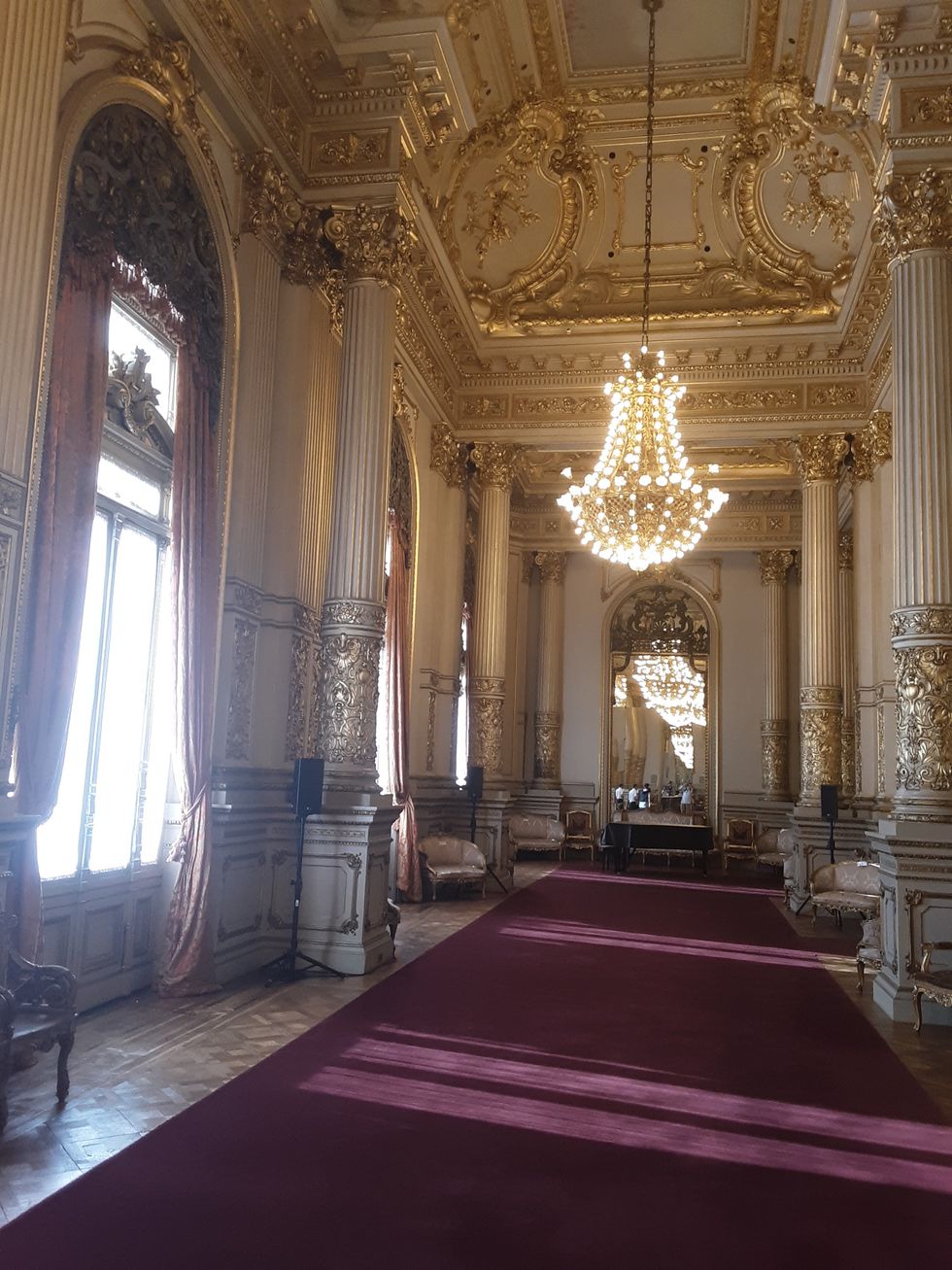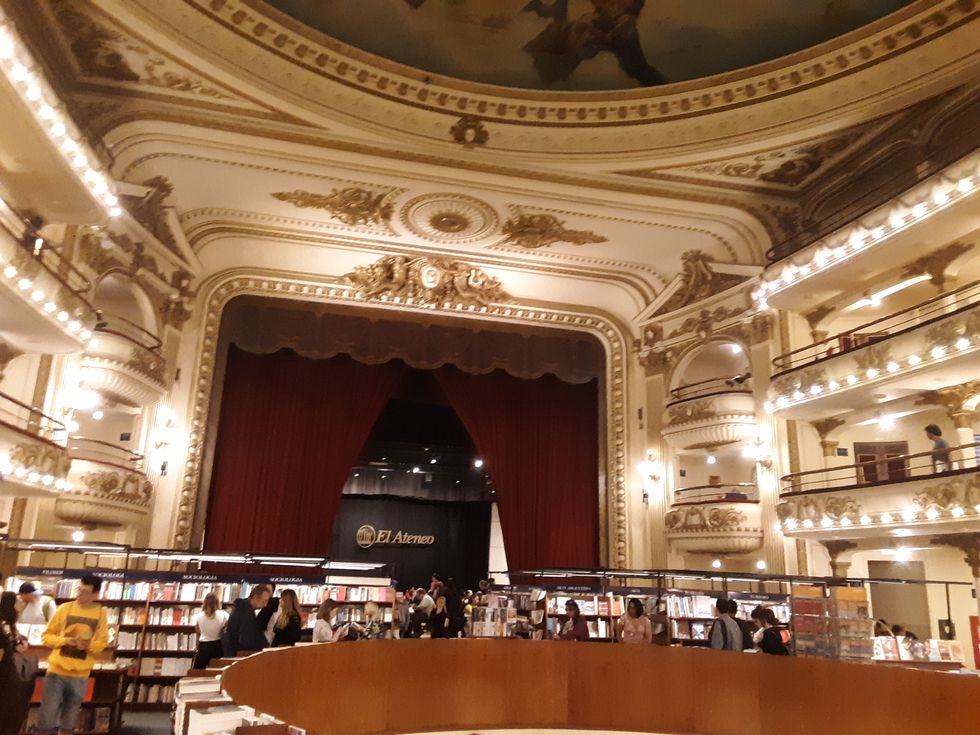I read a lot about "the Paris of South America" before actually arriving this past February, and that went a long ways towards preparing me. There is, however, no teacher like experience, and the following are some things that really stick out to me.
They do not use palm branches on Palm Sunday. Instead, they use olive branches.

Honest-to-goodness Buenos Aires olive branches.
Yours truly
I can finally see why the Spanish name for Palm Sunday--"Domingo de Ramos" (basically, "Branches Sunday")--does not mention palms. Still, it's a pretty big shock to have been celebrating Palm Sunday all your life and suddenly realize that not everyone in the world does it the same way. (Sounds like a wakeup call for cultural egocentrism.)
In that sense, it's pretty analogous to realizing that, in Latin America, "America" is the entire Western Hemisphere, not just the United States. May Simón Bolívar have mercy on your soul, President Trump. And may the Easter Bunny have mercy on my cognitive dissonance the next time Palm Sunday rolls around.
All of the exit signs here are green.

It's another big shock to go from red exit signs to green ones. Once you think about it, though, not only do green ones look nice, but they also make a good deal of sense. After all, green is a soothing color, and red is anything but--and who wants people to panic during an evacuation?
In the less formal restaurants, stores, and cafes, you'll never want for American pop music.

If you want to here Argentine music (and tango really is highly respected as a national treasure), be prepared to be treated to Demi Lovato instead of Carlos Gardel unless you know where to go. I blame Yankee imperialism. (And so, I'm sure, does the ghost of Evita. Out with the "vendepatrias"--well, actually, let's let the next elections decide about that.)
If you're a Bible buff, be prepared to have your psalm intake turned on its head.

The Catholic churches here, unlike in the U.S., use the Vulgate/Septuagint psalm numbering, instead of the Hebrew one. This means, for example, that "The Lord is my shepherd" is not Psalm 23, but, rather, Psalm 22.
If you join a choir here, be prepared to forget about "FACE", "EGBDF", "ACEG", and "GBDFA".

I've been in the Metropolitan Cathedral's choir for about a month now, and it's a good opportunity to brush up on solfege. What we know in the U.S. as C-D-E-F-G-A-B-C is do-re-mi-fa-sol-la-SI-do down here. That's right--"si", not "ti". This, I learned in high school, is the norm outside of the U.S.A. (Someone really ought to have reminded "The Sound of Music" of that.
People greet each other with kisses.

No, it's not that kind of kiss. Everyone greets everyone else, not with a handshake, but with a cheek kiss. It's really a very nice custom. I guess that in the U.S. we're not so comfortable showing our affection for our friends. (That might be in the running for the understatement of the year.)
People like their traditional food.

Sushi is a fad right now, and you can easily satisfy a craving for Burger King, but if you came to Buenos Aires to revel in empanadas and wine, you won't be disappointed. You'll find milanesa, medialunas, and dulce de leche everywhere. Seriously. The McDonalds near my apartment has dulce de leche ice cream.
The U.S. is not unique in being a "nation of immigrants."

Buenos Aires, in addition to its heavy Italian presence, has a Korean neighborhood, mosques, a street named Armenia, and the largest Jewish population in Latin America. It even has a kosher McDonald's.
Again, the U.S. is unique--but that doesn't mean that exceptionalism gets a free pass.
The city might be notable for its French and Italian architexture, but it's still fundamentally a Spanish colonial capital.

.A room in el Teatro Colón
Yours truly
Buenos Aires spent a good amount of time looking towards French and Italian models for its architecture, and it shows. The Casa Rosada, for example, has a clearly Italian-inspired interior. If you go into the many well-preserved colonial churches, however, you might just think you're in Madrid, and the Plaza de Mayo is, when it comes to city planning, just like any plaza in the Spanish-speaking world.
You don't give a party at 10 p.m.--it's at "22 hs."

Military time is, like Celsius temperatures, and the metric system, very useful. I guess that in the U.S. we don't like things to be simple. (Perhaps it's a national virtue.)
And, last, but (definitely) not least, books are everywhere.

El Ateneo--called the most beautiful bookstore in the world by National Geographic.
Yours truly
Buenos Aires is one of the most literate cities in the world, and it shows: there are bookstores everywhere. There could be nothing more fitting for the birthplace of Jorge Luis Borges. By the way, there's a set-up of book stands a short walk a away from my apartment that's just got to be one of the best places on planet Earth.

















